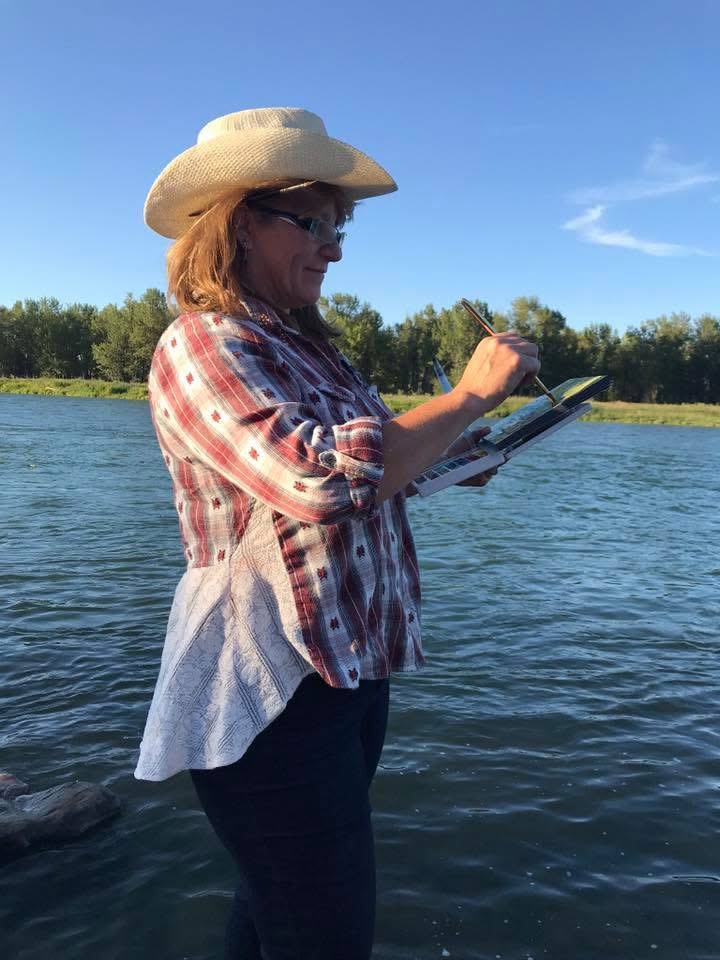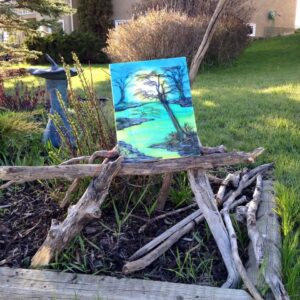
— Photo supplied by Anna Swanepoel
Encouraging conversation by gathering twigs and pebbles or taking a serene walk through nature can be effective ways to help people open up about their trauma and anxiety.
High River-based Anna Swanepoel has used the concept in her practice after completing several courses on Trauma-Informed Nature Based Expressive Arts Therapy. A portion of the clinical counselling therapist’s training was supported through RhPAP’s Rural Education and Advanced Learning (REAL) program.
Swanepoel says being able to offer this type of therapy in her rural-based practice offers more counselling options for her clients.
“When people are extremely traumatized, they actually struggle to talk about what happened, especially children,” she explains. “So, getting them out into nature really helps.”
Swanepoel has used the concept with clients who have faced everything from natural disasters to relationship issues, stressful medical situations, and other trauma.
Swanepoel says therapists play a role similar to “a first responder: they call it psychological first aid” with clients after a traumatic event.
During trauma, the brain goes into a survival-like process that in turn shuts down cognitive functions and reverts to a primal mode “where they can basically fight, flight, freeze, and sometimes totally have no response,” she says.
Swanepoel finds people who endure natural disasters such as floods or wildfires are so overwhelmed with the trauma of losing their homes, belongings and possibly community, that they can’t function. It occurs during a critical period when they need to apply for government support, file insurance claims, support their family, and carry out other often timely activities connected to the traumatic event.
Instead, they are paralyzed by anxiety.
“You really need somebody to take you by the hand and say, ‘let’s go for a walk, or let’s sit down, and let’s list what is in your control,’” says Swanepoel.
She encourages her participants of all ages to breathe in the fresh air and gather natural elements such as rocks, branches, or flowers.
“Find an element in nature that represents you.
“Somebody would take a little green leaf and say, ‘I can grow.’ Somebody would take a rock and say, ‘I’m rock solid.’”
Then they sit down with the chosen elements to determine what is in their control.
“Some people say, “well, my family is still alive … I can walk, I have hands, I can see, I can speak, I can eat, I can hear, I can smell.’ Some list everything they have control over and what they’re thankful for.
“Gratitude plays a really big role in calming people down and grounding them again.”
Some clients prefer indoor therapy sessions. Swanepeol still incorporates nature through the use of a sandbox or water table, and often pairs it with a warm, fuzzy blanket. Participants can dip their toes into the water, while others prefer to step into the sand, or explore the shells and rocks.

— Photos supplied by Anna Swanepoel
Swanepoel discovered the nature-based therapy as she faced some trauma of her own after her house burned down and her husband was in a serious car accident.
“It was one trauma on top of the other,” she says. “I’m a trauma therapist so I felt I needed to get my capacity back.”
Swanepoel, who serves as director with the Association of Counselling Therapy of Alberta, appreciates the fact that REAL offers rural clinicians the flexibility to tailor the training to meet their professional needs. She has taken six online courses toward her certificate.
“One can only do what you can do with the finances you have available. So REAL enabled me to do the next step.
“People … need help and the quicker I can finish the courses, the more I am equipped to help them.”
•••
Health professionals can access REAL funding three times a year with the current intake running until June 18. This initiative is aimed at nurses, midwives, nurse practitioners, and allied health professionals working in rural Alberta.
